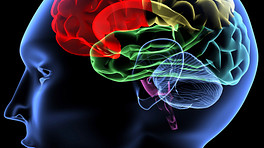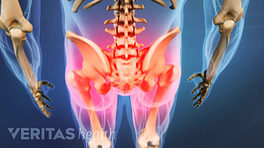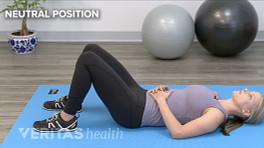Many people have found that natural pain relief options are a great way to help supplement medical treatments for chronic pain. The following natural pain relief options are generally easy to try, inexpensive, and have the potential for reducing your pain.
Try a few of the following options and see what works best for you.
- Release your inner endorphins. Endorphins are the natural pain killers produced by your body. They work by binding to the opioid receptors in your brain to block the perception of pain. Spurring increased production of these natural hormones can substantially help reduce your pain, as well as produce profound feelings of pleasure and satisfaction. 1 Kaufman DM, Geyer HL, Milstein MJ. In: Neurologic aspects of chronic pain. Kaufman’s Clinical Neurology for Psychiatrists, 8th Edition. 2017:309. While any activity that gets your blood pumping for a sustained period will release endorphins into your system, check with your doctor before starting a new exercise program.
- Find support and understanding. Unlike a broken leg or other obvious sign of injury, chronic pain is usually unseen. It is a profoundly personal—and often lonely—experience. If this is the case for you, we encourage you to find people who can be supportive and understanding. There may be a chronic pain support group in your local community or hospital. Or you may prefer to interact online. You may get started with a local or online forum seeking help, and then go on to find that you have a lot to contribute—and helping others is also a way to help yourself.
Visit our Back and Neck Pain Support Group on Facebook to find online support
- Enjoy the outdoors. 10 to 15 minutes of sun exposure a day can help the body produce vitamin D. While some studies have found vitamin D supplementation can help reduce chronic pain 2 Wu Z, Malihi Z, Stewart AW, Lawes CM, Scragg R. Effect of vitamin D supplementation on pain: a systematic review and meta-analysis. Pain Physician. 2016; 1997):415-27. , other studies have not and more research is needed. 3 Straube S, Derry S, Moore RA. Vitamin D for the treatment of chronic painful conditions in adults. Cochrane Database Syst Rev. 2015(5): CD007771. doi: 10.1002/14651858.CD007771.pub3 Regardless, being out in the sunshine can boost your mood and may also promote better immune function. 4 Prietl B, Treiber G, Amrein K. Vitamin D and immune function. Nutrients. 2013;5(7):2502-2521.
- Soak in warm water. Soaking your body in warm water can alleviate many forms of muscle pain and muscle spasm, as well as various types of arthritis. There are many options for a warm soak, including a deep bathtub, whirlpool tub, or warm pool for water therapy.
- Try dry heat therapy. If a soak isn’t for you, or you want to apply heat more often, there are plenty of other heat therapy options for your pain. Consider applying a heat pack or an adhesive back wrap that provides continuous low-level heat. Just remember to carefully read directions before using a heat therapy product to reduce the risk of a burn or other injury.
- Enjoy essential oils. Essential oils have long been valued for their analgesic effects in many cultures. There are many ways to benefit from essential oils—some people inhale them (aromatherapy), others include several drops in their massage oil and enjoy as part of a therapeutic massage. When combined with traditional treatment therapies, several oils, in particular, are thought to have an analgesic effect, including peppermint oil, rosemary, and lavender, but more research is needed. 5 Lakhan SE, Sheafer H, Tepper D. The effectiveness of aromatherapy in reducing pain: a systematic review and meta-analysis. Pain Res Treat. 2016;2016:8158693. doi:10.1155/2016/8158693 Before choosing an essential oil, read its label for intended use to reduce the risk for complications, such as toxic or allergic reactions.
- Try massage therapy. A high-quality therapeutic massage spurs blood flow, reduces muscle tension, and boosts feelings of wellness. Massage therapy is defined as the manipulation of soft tissues—muscles, tendons, and ligaments—through hands-on massage by a qualified massage therapist. Like many complementary therapies, there is no substantial agreement in terms of how much massage therapy can help reduce pain, or which type of massage is best for which type of pain, so you may need to try more than one approach to find what works best for you.
- Stretch and loosen up. Almost everyone can benefit from stretching the soft tissues (the muscles, ligaments, and tendons) in and around the spine. Your back is designed for movement, and if your motion is limited because you are in pain, it can make your back pain worse.
- Meditate and relax. Meditation comes in many varieties, some complex, others simple. One common approach is just to find a sound that is pleasing to you but may or may not have a meaning (like "som" or another sound), close your eyes, sit still and comfortably, and repeat the sound in your mind. When your thoughts wander, notice that they have wandered and return to your sound. If you feel your pain, notice the pain and return to your sound. Start with a few minutes, and gradually lengthen to 30 minutes if you find meditation to be enjoyable.
- Imagine yourself in a better place. This form of meditation, called guided imagery, involves hearing and internalizing therapeutic suggestions to help you feel better and devalue pain signals. In one study of 28 women with osteoarthritis pain, half of the women listened to a 10- to 15-minute recorded script twice daily that guided them through muscle relaxation techniques. Women in the guided imagery group showed statistically significant improvements in their pain levels and mobility within 12 weeks, versus women in the control group who did not see any improvements. 6 Baird CL, Sands L. A pilot study of the effectiveness of guided imagery with progressive muscle relaxation to reduce chronic pain and mobility difficulties of osteoarthritis. Pain Manag Nurs. 2004;5(3):97-104. Guided imagery can be learned with a practitioner or on your own using online videos, phone apps, or CDs.
- Swap more anti-inflammatory foods into your diet. Anti-inflammatory foods—such as fruits, vegetables, unsaturated fats, whole grains, beans, nuts, and fish high in omega-3 fatty acids—may play a role in reducing pain for some people. The Mediterranean diet and DASH diet both contain lots of anti-inflammatory foods and have been linked to reduced disease risk and better heart health. While some research suggests that an anti-inflammatory diet may help lower pain related to obesity 7 Emery CF, Olson KLL, Bodine A, Lee V, Habash DL. Dietary intake mediates the relationship of body fat to pain. Pain. 2017; 158(2): 273-77. and osteoarthritis, 8 Clinton CM, O'brien S, Law J, Renier CM, Wendt MR. Whole-foods, plant-based diet alleviates the symptoms of osteoarthritis. Arthritis. 2015;2015:708152. more research is needed.
- Laugh more often. One study showed that social laughter increases pain tolerance. 9 Dunbar RI, Baron R, Frangou A, et al. Social laughter is correlated with an elevated pain threshold. Proc Biol Sci. 2012;279(1731):1161-7. Laughing along with others was shown to have the highest positive impact. Laughter has many positive effects, including increasing blood circulation and oxygen intake, and raising your body's level of endorphins (the body's natural pain killers). There is a whole movement, called laughter yoga, which helps people enjoy the many benefits of laughter without having to need a reason to laugh—it just focuses on laughing for its own sake.
- Get enough restorative sleep. Getting enough sleep is critical to managing pain and promoting healing, so it's important to employ a variety of sleep aids to help get a healthy amount of sleep. Regular exercise that physically exhausts the body helps promote deep sleep. Visualization, meditation, and other psychological techniques can also help you get to sleep and stay asleep.
- Ice it. Using ice and/or a cold gel pack can on the painful area help reduce inflammation and numb pain by slowing your nerve impulses. In general, limit ice therapy to 15 or 20 minutes with a rest of at least 2 hours between applications—and keep a layer between the ice and your skin to reduce the risk for skin damage.
These natural pain-relieving tips are intended as ideas for you to consider on your personal journey with managing chronic pain. If your pain worsens or affects your ability to perform everyday tasks, talk to your doctor for medical treatment options.
Learn more:
- 1 Kaufman DM, Geyer HL, Milstein MJ. In: Neurologic aspects of chronic pain. Kaufman’s Clinical Neurology for Psychiatrists, 8th Edition. 2017:309.
- 2 Wu Z, Malihi Z, Stewart AW, Lawes CM, Scragg R. Effect of vitamin D supplementation on pain: a systematic review and meta-analysis. Pain Physician. 2016; 1997):415-27.
- 3 Straube S, Derry S, Moore RA. Vitamin D for the treatment of chronic painful conditions in adults. Cochrane Database Syst Rev. 2015(5): CD007771. doi: 10.1002/14651858.CD007771.pub3
- 4 Prietl B, Treiber G, Amrein K. Vitamin D and immune function. Nutrients. 2013;5(7):2502-2521.
- 5 Lakhan SE, Sheafer H, Tepper D. The effectiveness of aromatherapy in reducing pain: a systematic review and meta-analysis. Pain Res Treat. 2016;2016:8158693. doi:10.1155/2016/8158693
- 6 Baird CL, Sands L. A pilot study of the effectiveness of guided imagery with progressive muscle relaxation to reduce chronic pain and mobility difficulties of osteoarthritis. Pain Manag Nurs. 2004;5(3):97-104.
- 7 Emery CF, Olson KLL, Bodine A, Lee V, Habash DL. Dietary intake mediates the relationship of body fat to pain. Pain. 2017; 158(2): 273-77.
- 8 Clinton CM, O'brien S, Law J, Renier CM, Wendt MR. Whole-foods, plant-based diet alleviates the symptoms of osteoarthritis. Arthritis. 2015;2015:708152.
- 9 Dunbar RI, Baron R, Frangou A, et al. Social laughter is correlated with an elevated pain threshold. Proc Biol Sci. 2012;279(1731):1161-7.











